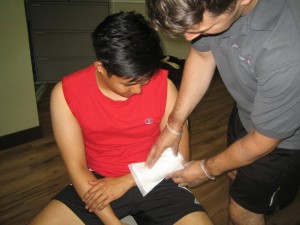There are more than 30 strains of the staphylococcus bacteria but staphylococcus aureus is responsible for causing most of the staph infections such as pneumonia, skin infections, blood poisoning, food poisoning and toxic shock syndrome.
The bacteria can thrive harmlessly on the skin but once the skin is cut or wounded, the staph bacteria can enter the wound and trigger the development of an infection. Always remember that staph infections on the skin are the most common but can be treated at home. With this in mind, it is vital to observe proper hygienic measures even at home. You can register for first aid training so that you will gain an insight on proper infection control.
Cleansing
When an individual has a localized staph infection in the skin, it must be treated first by cleansing the affected area using an antibacterial soap and then immersed in warm water. Antibacterial soaps are readily sold over-the-counter and can prevent the spread of the staph infection to other parts of the body. You can consult a doctor how to take care of the affected area to hasten the recovery period.

Antibiotic ointments
Antibiotic ointments are suitable topical treatment for staph infections. Once the area has been thoroughly cleansed and immersed in warm water, you have to dry the area thoroughly and apply an antibiotic ointment. The affected area should be covered with a clean dressing to prevent the staph infection from spreading to the surrounding area. The towels used on the affected area should only be used once before washing.
Pain relief
You can immerse the affected area or simply place a clean, warm cloth over the area to help relieve the pain linked with a staph infection. A heating pad or warm water bottles can be applied for about 20 minutes at 3-4 times throughout the day to provide relief from the pain. Additionally, you can also provide over-the-counter NSAIDs to help manage the pain linked with a staph infection.
Possible complications
In case the staph infection does not show any signs of clearing up, the bacteria can cause serious complications such as blood poisoning, pneumonia and even toxic shock syndrome. Other possible complications that can occur include cellulitis or impetigo. If the staph infection does not vanish within a few days after treatment using over-the-counter remedies, high fever develops or the infected area is warm and inflamed, medical care is required as soon as possible to prevent complications from developing.
Preventive measures
Always bear in mind that keeping the body and clothes clean is a must as well as the towels and bed linens used. An individual can acquire staph infection from contaminated objects as well as skin-to-skin contact and can easily spread between those who live in close contact with each other.
